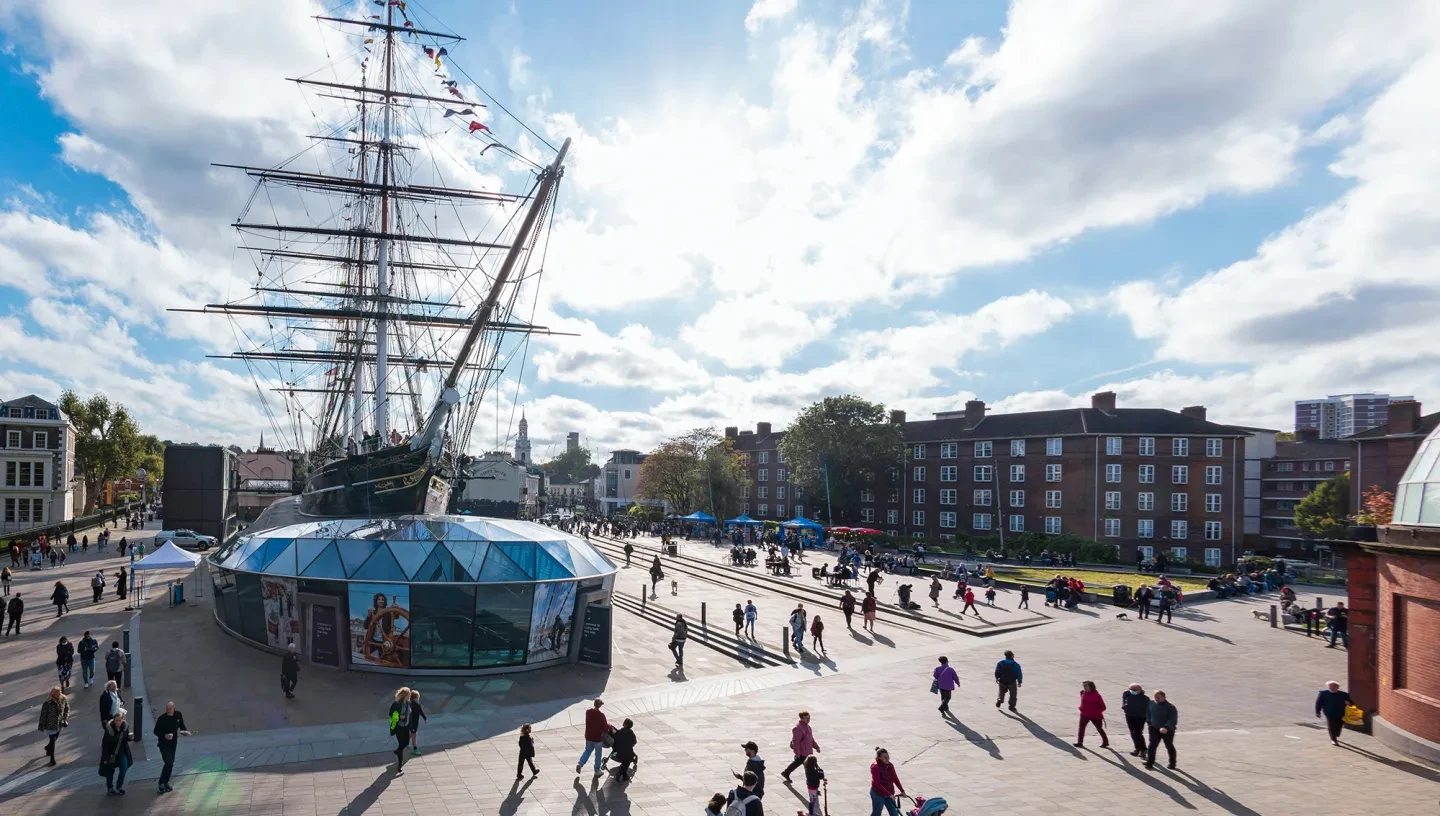
Greenwich is a special place with a rich history.
In 1997 UNESCO recognised Maritime Greenwich’s ‘outstanding value to humanity’ by making it a World Heritage Site.
This status encourages its protection and ensures that present and future generations will continue to enjoy it.
Why visit Maritime Greenwich? Discover the best things to see and do, and learn more about its rich history.
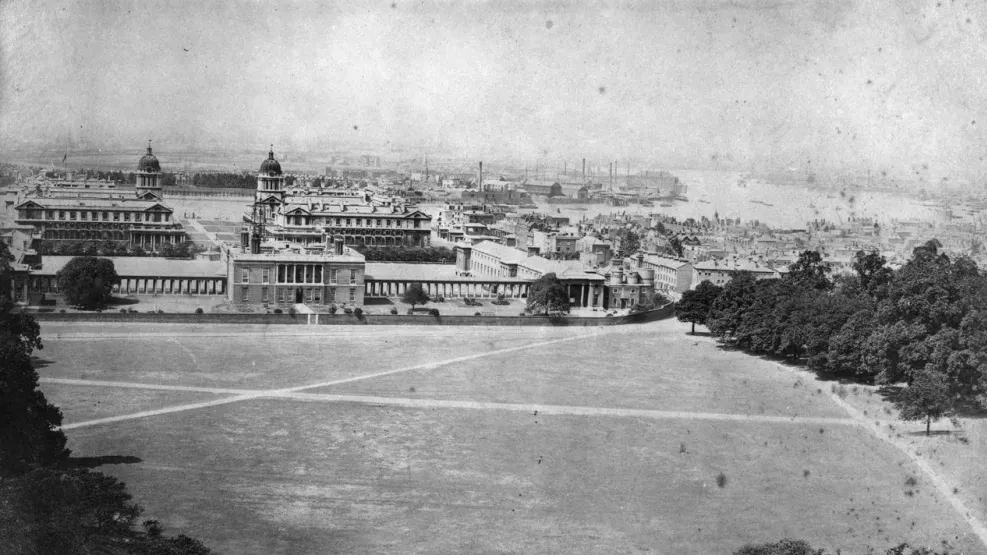
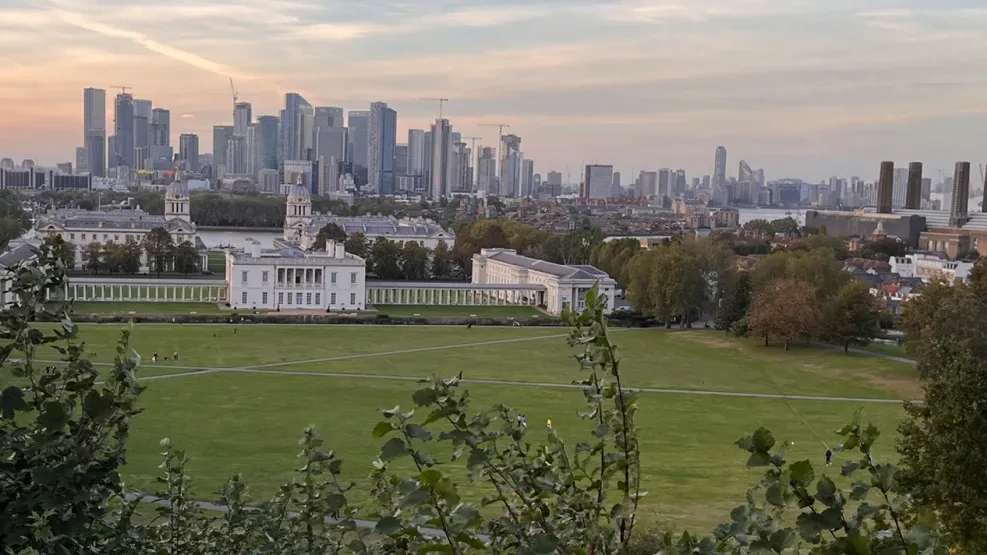
Top things to see
Maritime Greenwich includes the historic town centre, Greenwich Park, the Old Royal Naval College and the four sites of Royal Museums Greenwich: the National Maritime Museum, Royal Observatory, Cutty Sark and the Queen’s House.
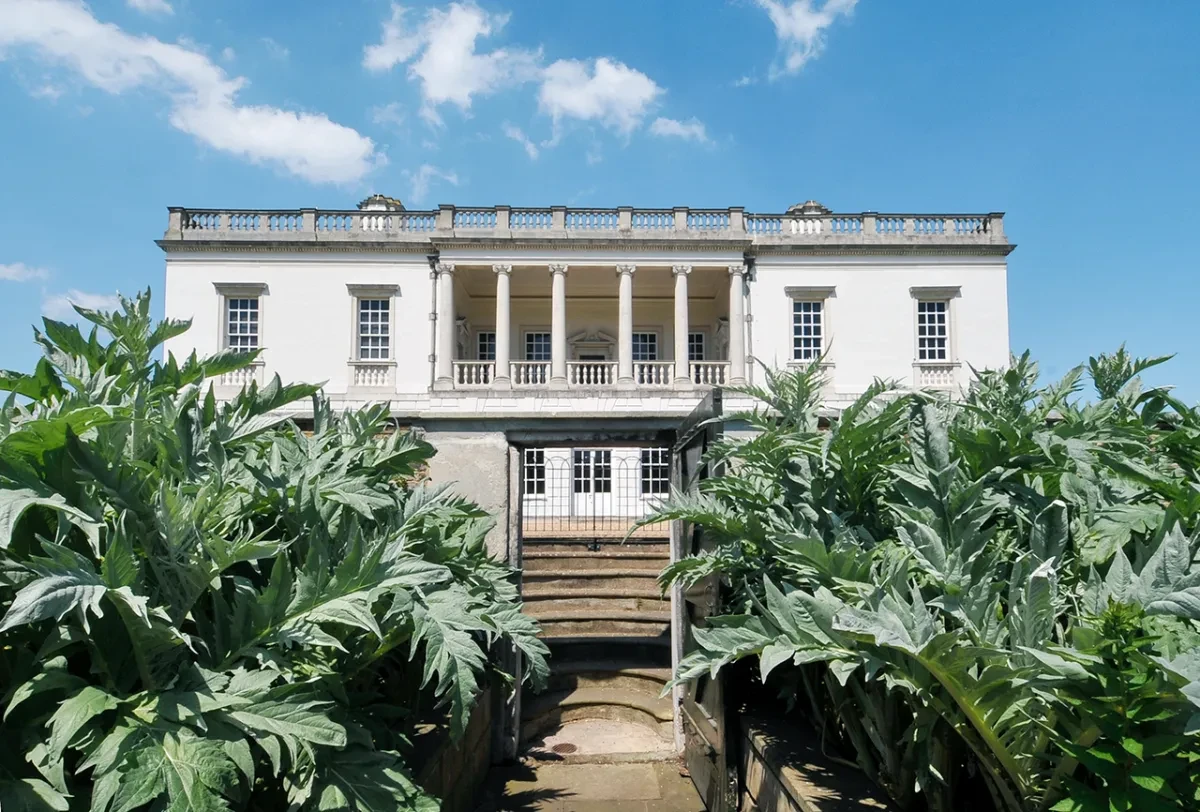
The Queen’s House
The Queen’s House, designed by architect Inigo Jones and completed in the 1630s, is one of the most important buildings in British architectural history. Taking inspiration from the architecture and gardens of Italy, the Classical villa was intended to be a private retreat for the queens of the Stuart royal family. It is now home to a superb art collection.
Without the Queen’s House, Greenwich would not look as it does today. Its style and status shaped the form of all later building in the area. During the construction of the Royal Hospital in the 1690s, Queen Mary II ordered that the new institution should not block the view of the river from the Queen’s House. As a result the Hospital was divided in two, with twin domes and an open central court perfectly framing the view of the Queen’s House and Greenwich Park beyond.
Book free Queen's House tickets
Plan your visit to the Queen's House
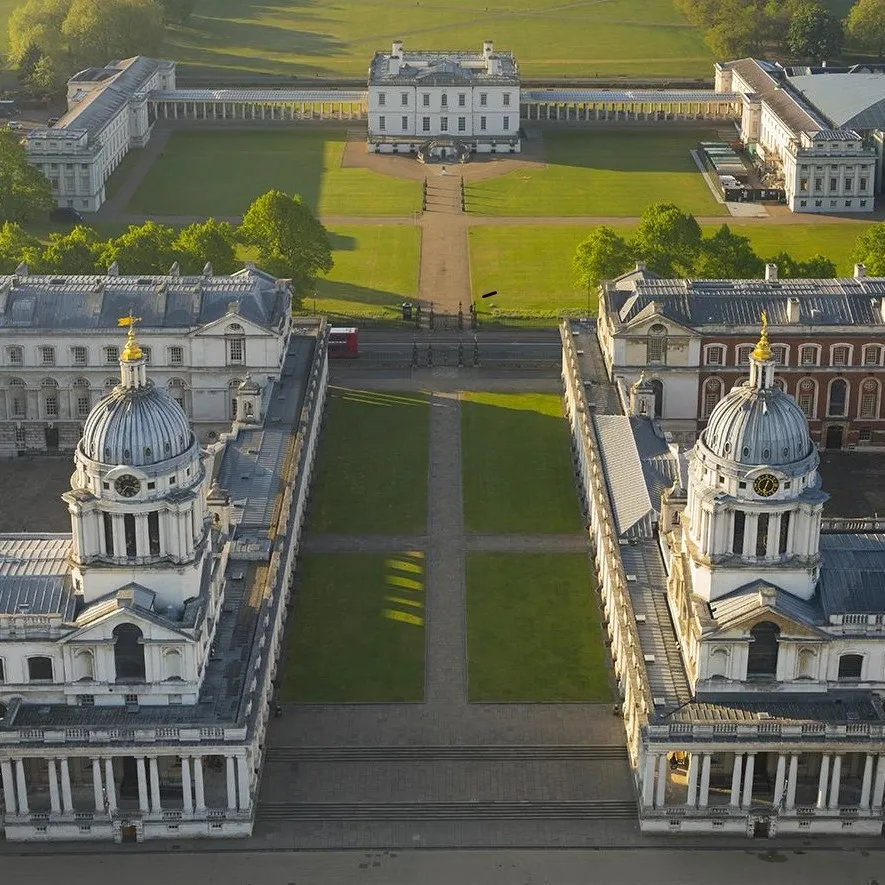
Old Royal Naval College
This outstanding group of buildings was designed by Sir Christopher Wren and Nicholas Hawksmoor, and built between 1696 and 1751. It was originally the location for the Royal Hospital for Seamen, a home for naval seamen who were unable to maintain themselves due to age or disability. At its peak in 1814, 2,710 ‘Greenwich Pensioners’ lived here.
The Royal Hospital was not just a charitable institution; it was also intended to highlight Britain’s maritime power. The Painted Hall, featuring artist Sir James Thornhill’s magnificent decorative ceiling, presents King William III and Queen Mary II in triumph and marks the moment Britain became a dominant power in Europe. In 1806 the body of Lord Nelson lay in state here before being buried in St Paul’s Cathedral.
The Old Royal Naval College continues to be used today, including by the Trinity Laban Conservatoire of Music and Dance. Students can often be heard rehearsing inside, filling the historic colonnades with music.
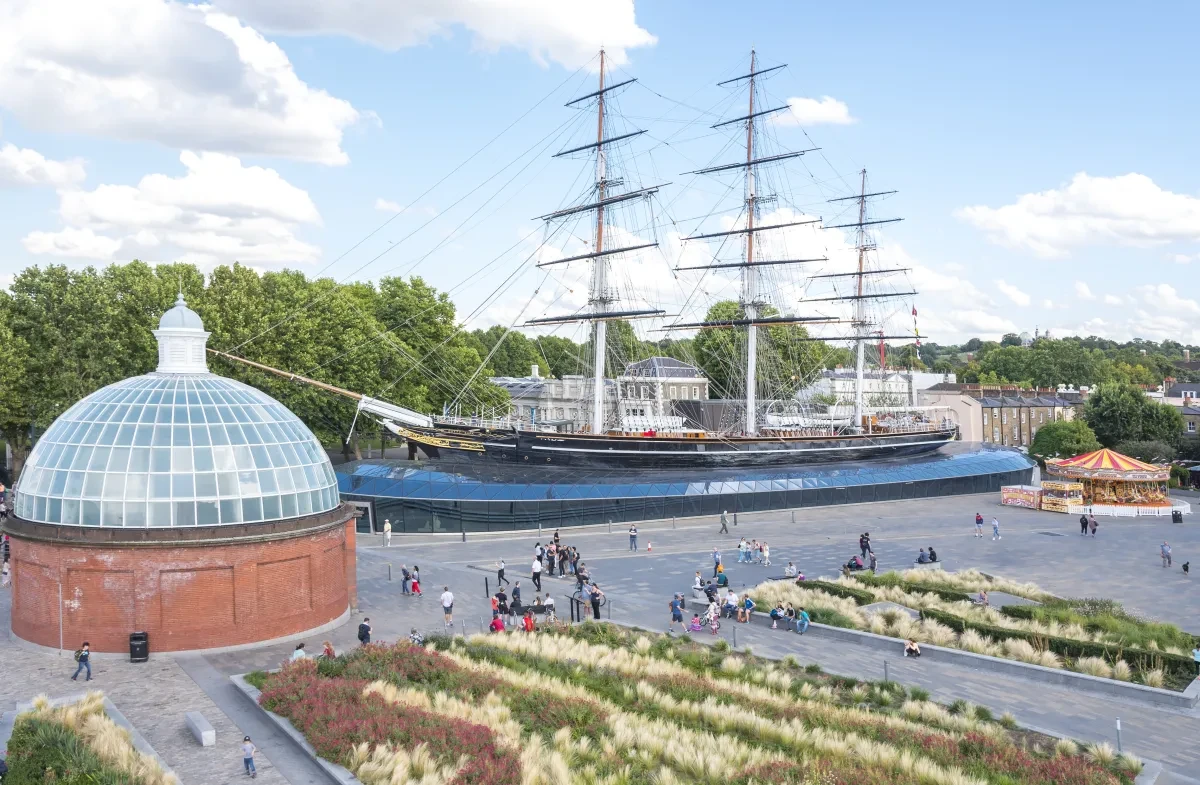
Cutty Sark
Greenwich is a fitting final resting place for one of the Age of Sail’s greatest survivors: the tea clipper Cutty Sark.
Cutty Sark was launched in 1869 to serve the China tea trade. But it was during its later voyages to Australia when the ship really made its name, regularly arriving into Sydney weeks ahead of its rivals.
The ship would have been lost but for the efforts of the Cutty Sark Preservation Society, who brought it to Greenwich in 1954. Three years later it was opened to the public by Elizabeth II.
Cutty Sark is now preserved in a specially built dry dock and raised over three metres in the air, giving visitors the jaw-dropping experience of being able to walk directly beneath the ship.
Cutty Sark was only designed to last 30 years. More than 150 years later, it remains a must-see sight in the heart of Maritime Greenwich.

Greenwich Market and town centre
For centuries taking a boat along the River Thames was the easiest way to get to Greenwich – and a visit by river remains the best way to appreciate the historic borough today. Arriving next to Cutty Sark, with views of the Old Royal Naval College and the greenery of Greenwich Park behind, is a special maritime experience.
Once here, take time to explore Greenwich Market. Built in the 1830s to sell meat, fish and vegetables, the covered market is now home to a heady mix of craft stalls, antique shops and street food vendors.
Echoes of Greenwich's cultural and social history can be found around almost every corner. Samuel Johnson lived in Greenwich Church Street when he first came to London in 1736. Charles Dickens was among the hundreds of thousands who descended on Greenwich every Easter for the 'perfectly bewildering’ Greenwich Fair before it was abolished in 1857.

National Maritime Museum
Greenwich’s location on the River Thames connected London with the world. The National Maritime Museum maintains that global outlook, with galleries displaying objects and stories from the icy Arctic to the islands of the Pacific.
The Museum is free to visit and hosts a dynamic programme of events and special exhibitions, all charting the history of seafaring and humanity's changing relationship with the ocean.
Plan your visit to the National Maritime Museum

Royal Observatory Greenwich
Perched high on a hill in Greenwich Park, the Royal Observatory is the scientific heart of Maritime Greenwich.
The Observatory was founded by Charles II in 1675, tasked by the King with "the perfecting of the art of navigation". Astronomers carefully observed and recorded the positions of the Moon and stars throughout the year, in the hope that this data could help sailors find their position at sea. Highly accurate sea clocks were also set and tested here, making the Observatory a vital centre for astronomy, navigation and the measurement of time. This eventually led to the world's first Prime Meridian and the Greenwich Mean Time standard we still use today.
UNESCO's World Heritage committee rightly celebrates this rich scientific legacy. Today, visitors to the Royal Observatory can still walk through the historic buildings and see the instruments that defined time for the world.
Book Royal Observatory tickets
Plan your visit to the Royal Observatory
Getting to Maritime Greenwich
Greenwich is a quick, easy journey from central London, and once here all the historic sites are within easy walking distance of each other.
Frequent train services call at Greenwich and Maze Hill rail stations, while Greenwich DLR station provides easy connections with the London Underground network.
Travelling by boat to Greenwich is a picturesque alternative. Glide past London's city sights slide before alighting at Greenwich Pier, right next to Cutty Sark and the Old Royal Naval College.
Drivers can find a list of public car parks in Greenwich on the Council website here. Alternatively, the National Maritime Museum has a secure car park (see location on Google Maps) available to the public during weekends, bank holidays and school holidays. Book a space in advance.
















